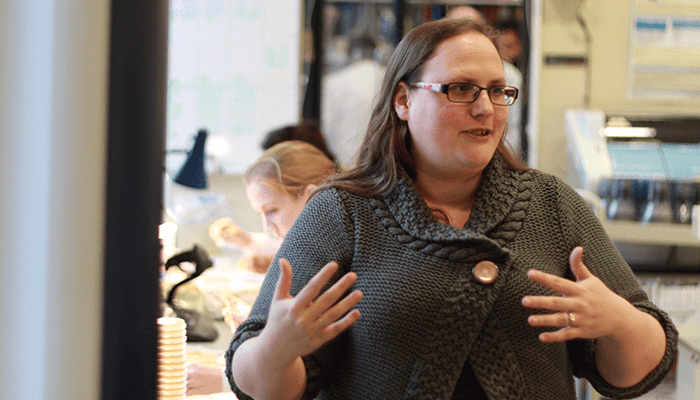We have quite an interesting way of approaching microbiology here at GOSH. We’re trying to incorporate new rapid diagnostics, while simultaneously looking at new combined omics approaches to aid clinical interpretation. When we began to look at bacterial whole genome sequencing, for instance, we quickly realized that we couldn’t look at that data in isolation. Genetically, the profiles were showing antimicrobial resistance (AMR) – but, when we conducted sensitivity testing, that’s not what we saw. To clear up the confusion, we sent our samples for LC-MS/MS to look at proteomic expression profiles, and compared that data with our sequences to see what additional information we could glean and how essential it might be. What did we find? It turned out to be key, which is why we’re now exploring how to use tools like MALDI-TOF MS for rapid CRE expression diagnostics. It’s easy to miss things by looking at either DNA markers or expression profiles alone, so we are always trying to pair the two together. We really need to know what’s functional to make reliable clinical decisions about patient treatment.

The AMR work is just one example of why it’s important to have different tools and disciplines working together. I might sequence a viral genome alone – but then I go to immunology and ask what they’ve learned about the patient, because it definitely affects my interpretation. You can’t do the clinical interpretation without understanding the overall disease process. With all of the data now available to us, interpretation is more complicated than ever. When you’re designing clinical decision-making algorithms to handle big data, it’s important to make sure that the final report can be fully understood by the clinical teams on the ward. From five million base pairs to a single page – that involves quite a bit of skill! One thing that helps is to speak with the clinicians themselves. I ask, “What is it that you need from me? What information will change your management of the patient?” I can give them 101 different pieces of information, but that isn’t helpful (and can even get in the way); all they really need are the few pieces that will affect the patient’s diagnosis, treatment, and ongoing care. Best of all, we have everything we need on-site – so if a patient needs a test immediately, we can all pull together to optimize our use of a tiny sample and deliver rapid results in time to provide crucial treatment.
Our MALDI mass spec system – called Bonnie Tyler(!) – has made a massive difference to our protocols. For instance, whenever we received a new blood isolate, we used to take up to three days to identify the pathogen(s) involved and get an antibiogram – a summary of antibiotic susceptibilities. With Bonnie, we can take a positive blood culture, spin it down to get a pellet, identify the pathogen(s) in four hours or less, and begin treating the patient with more appropriate antibiotics based on species identification immediately, rather than just providing general recommendations based on a Gram stain. We received a lot of support from our colleagues in biochemistry for this first venture into using proteomics – it was a very new thing for microbiology, after all. Our experienced biochemists helped us to understand what our results meant and what we could do with our new tools. Now, we’ve expanded to other types of analyses. Currently, if we want to test for carbapenem-resistant Enterobacteriaceae, we have to take a sample, plate it, look at the pathogen’s antibiogram, and then, if it looks resistant, perform follow-up testing in infection control. Final confirmation can take three weeks! And during that time, the affected patient must be isolated, receive special cleaning, go last on the list for investigations and operating theaters; in general, it really impacts on clinical care. To avoid that, we’re introducing a new method that uses proteomics to look at enzyme cleavage of the antibiotic. In only two hours, we’ll be able to get that confirmed result – sparing the patient weeks of disruption. I think it’s clear how important that rapid proteomic result is to improving patient care!
In Service to Our Smallest Patients
Enzymology: A Whistle-Stop Tour of GOSH Pathology
Microbiology: A Whistle-Stop Tour of GOSH Pathology
Histopathology: A Whistle-Stop Tour of GOSH Pathology
Flow Cytometry: A Whistle-Stop Tour of GOSH Pathology
Rapid response: A Whistle-Stop Tour of GOSH Pathology
In Service to Our Smallest Patients Enzymology: A Whistle-Stop Tour of GOSH Pathology Microbiology: A Whistle-Stop Tour of GOSH Pathology Histopathology: A Whistle-Stop Tour of GOSH Pathology Flow Cytometry: A Whistle-Stop Tour of GOSH Pathology Rapid response: A Whistle-Stop Tour of GOSH Pathology
